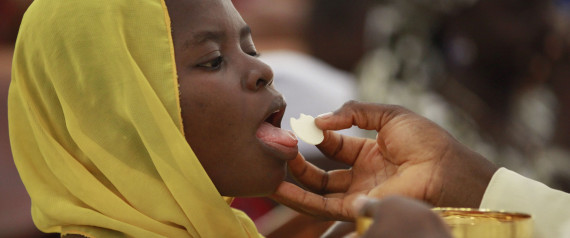Question: I know the practice is optional, but where did Communion in the hand come from? Don’t you think it encourages disrespect?
Answer: Communion in the hand was the norm for most of the first millennium. Because of the dangers of misuse and the growing concern for reverence, the practice of giving the Host on the tongue was introduced about the ninth century.
The present practice of giving communion in the hand dates from 1969, when Pope Paul VI opened the way for episcopal conferences who wished to reintroduce the practice. Permission was granted to the U.S. bishops in 1977.
In my opinion, there is nothing intrinsically more reverent about reception on the tongue or less reverent about receiving in the hand. Reverence or irreverence are generally determined by other factors: the spiritual attitude of the recipient, the demeanor of the one giving communion, the adequacy of eucharistic understanding, and the manner in which the eucharistic elements are treated both within and outside Mass.
St. Cyril of Jerusalem in the fourth century offered a powerful catechesis on the mode of receiving communion in the hand that is still applicable today: "When you approach, do not go stretching out your open hands or having your fingers spread out, but make the left hand into a throne for the right which shall receive the King, and then cup your open hand and the Body of Christ, reciting the ‘Amen.’ Then sanctify with all care your eyes by touching the Sacred Body, and receive it.But be careful that no particles fall, for what you lose would be to you as if you had lost some of your members. Tell me, if anybody had given you gold dust, would you not hold fast to it with all care, and watch lest some of it fall and be lost to you? Must you not then be even more careful with that which is more precious than gold and diamonds, so that no particles are lost?"
more>>



1 comment:
Pope Paul VI did not institute the practice if Communion in the Hand. It was am illicit behavior that was simply approved by the Vatican. To read the Pope's concession, read the following:
http://wherethereispeter.blogspot.com/2010/01/holy-communion-on-tongue-or-hand.html
Post a Comment